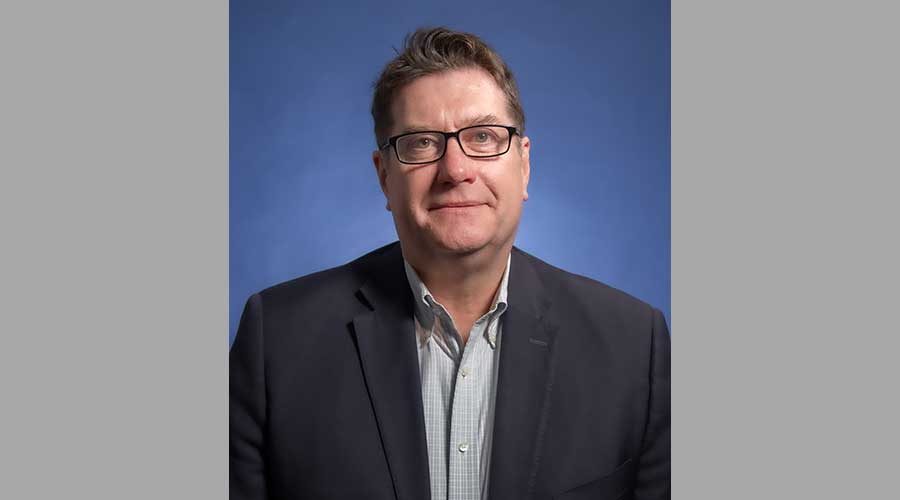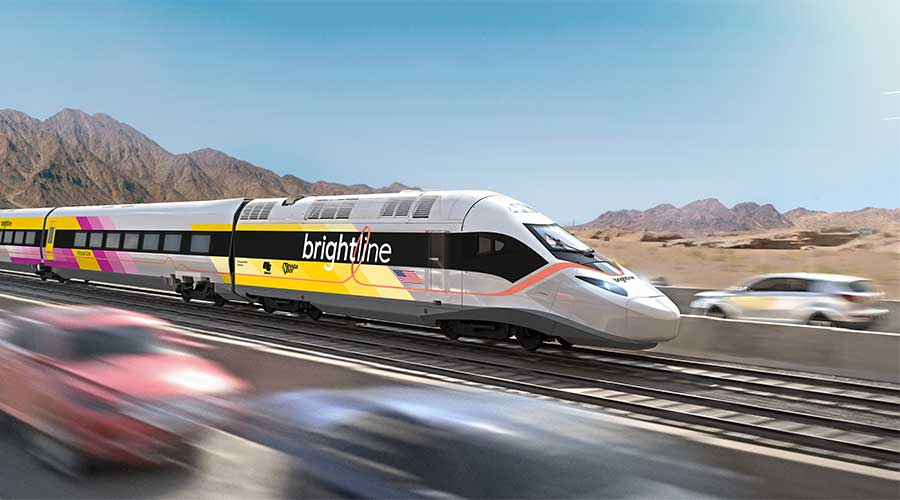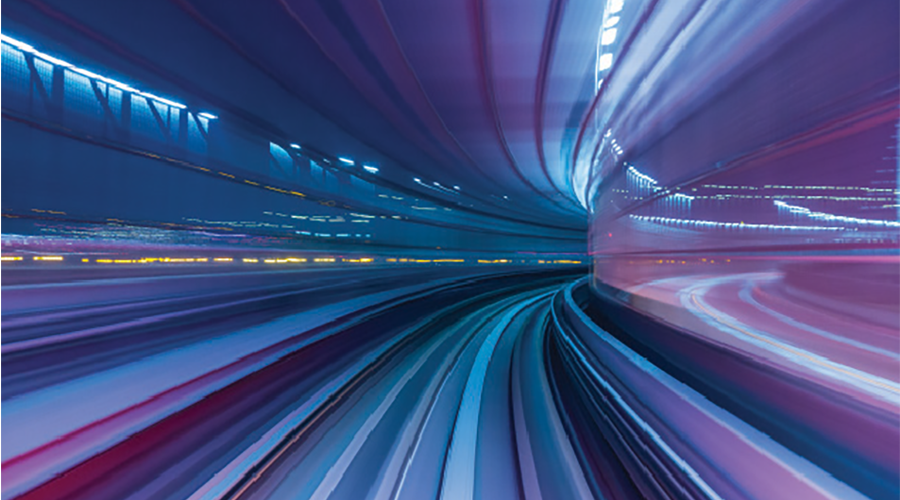Stay updated on news, articles and information for the rail industry
September 2012
Rail News: Passenger Rail
Caltrain electrification project ready to roll
by Angela Cotey, Associate Editor
Cut operating expenses, increase ridership, boost capacity and reduce carbon footprints. Those issues are top of mind for any transit agency executive (and, regarding the latter, see Transit Agencies, Passenger Railroads Pursue Eco-friendly Techniques). Rarely does a single project or initiative address all of those objectives. But at Caltrain, officials are set to launch a system electrification program that has the potential to do so — and, by extension, create a more modern railroad that eventually will operate alongside high-speed trains.
The agency long has proposed to electrify the majority of its commuter-rail system, along a 50-mile stretch between San Francisco and San Jose, Calif. By doing so, it could operate electric multiple units (EMUs), which are more environmentally friendly than the agency's diesel locomotive-pulled trains. The EMUs also would start and stop faster than the existing trains, so Caltrain could provide more service and, as a result, carry more riders and generate more revenue.
Finding the funds to complete the $1.5 billion project always has been the biggest obstacle in launching the project.
"We had a project we knew would satisfy a lot of the needs we have, but no money to complete it," says Caltrain's Director of Government and Community Affairs Seamus Murphy.
Until now. In July, the California Legislature approved a bond sale that will help finance the state's high-speed rail project. A portion of the bonds will be used to help fund local and regional transit projects that will enable transit services to eventually connect with high-speed rail; Caltrain's electrification is among those projects.
Now, Caltrain will move full speed ahead to complete environmental reviews, design work and construction so EMUs can be up and running by 2019. Once they are, Caltrain officials believe the agency will be positioned to serve a growing Bay Area and Silicon Valley population, and address its long-standing budget woes.
"The electrification has a lot of appeal for a lot of reasons," says Caltrain Executive Director Michael Scanlon.
A solution Caltrain's financial challenges are chief among them. In recent years, budget issues have caused the electrification program to evolve from a "nice-to-have" to a "have-to-have."
Agency officials first began discussing plans to electrify the majority of the 77-mile commuter-rail system — which runs between San Francisco and Gilroy, Calif., through the Silicon Valley — in the late 1990s.
At the time, the electrification proposal appealed to Caltrain officials and board members largely because of its environmental benefits. The agency's locomotives consume more than 4 million gallons of diesel annually, and in the environmentally conscious Bay Area and Silicon Valley, Caltrain officials wanted to do their part to reduce greenhouse gas emissions.
Two Birds, One Stone
But during the past decade, the project has taken on even more meaning. Caltrain has suffered various budget hits, first from the dot-com bust in 2001 and later from the Great Recession.
High unemployment and plummeting sales tax revenue have placed a major strain on the agency's finances. During the past several years, Caltrain officials have had to rely on one-time funding sources, service cuts and fare increases to balance the budget.
In the meantime, Bay Area planning agencies have been working to determine how the region can accommodate the population increase expected in the coming decades — and they're counting on Caltrain's system to serve as a catalyst for development.
Electrification is the best way for Caltrain to increase capacity while also generating a steady stream of new revenue, agency officials believe.
The project calls for installing overhead catenary, as well as an advanced signal system that includes positive train control. Caltrain also will have to purchase EMUs — lightweight, European-style equipment that can start and stop faster than diesel trains.
Caltrain officials began taking steps to advance the electrification project long before funding was available. The agency started conducting environmental studies in 2004, refreshed its Environmental Impact Report in 2008 and had the report certified at the federal level in 2009. In 2010, the agency reached a major project milestone when the Federal Railroad Administration (FRA) issued Caltrain a waiver to operate EMUs — which don't meet the FRA's crashworthiness standards — on its tracks concurrently with diesel equipment.
But Caltrain's environmental documents have not yet been approved at the state level. The environmental work was completed before voters approved Proposition 1A, a bond measure to finance the state's high-speed rail system, in November 2008. Once the measure was given the green light, Caltrain officials put the state environmental approval process on hold so they could begin incorporating the proposed high-speed system into their environmental plans. The San Francisco-to-San Jose corridor is part of the planned high-speed rail route.
"We needed to take a step back and really make sure that the two efforts were being planned in conjunction with each other," says Murphy.
The California High-Speed Rail Authority (CHSRA) initially planned to build a fully grade separated, four-track corridor for high-speed trains. But residents on the San Francisco peninsula were concerned about elevated tracks that would be built, as well as noise, vibration and property acquisition.
In April 2011, Democratic State Sen. Joe Simitian, U.S. Rep. Anna Eshoo (D-Calif.) and Assemblyman Rich Gordon (D-Menlo Park) called on CHSRA and Caltrain to work together to create a "blended" system, under which future high-speed trains would operate on an electrified and upgraded Caltrain corridor.
The approach would cost less than CHSRA's initial plan and relieve local residents' concerns about the impact a separate track would have on their communities.
"It moves the project forward in a way that you limit the scope to a primarily two-track system that remains within the Caltrain right of way, and you have Caltrain and high-speed rail share tracks where it makes sense," says Murphy.
Shortly after the blended system was proposed, Caltrain launched a capacity analysis to determine if the existing infrastructure would support the addition of high-speed service while also increasing Caltrain service.
"We looked at peak-hour service to get an idea for the worst-case scenario, and we found that we could operate six trains every hour with the electrified Caltrain, and also operate as many as two high-speed rail trains an hour in each direction," says Murphy.
However, CHSRA's original four-track plan called for operating nine to 12 high-speed trains every hour, so Caltrain officials are examining what infrastructure could be added to the existing corridor to increase capacity for high-speed trains.
"We're still in the process of determining exactly what infrastructure we would need, but we do know that if we added a set of passing tracks somewhere on the corridor — and there are a number of locations being considered — we could double high-speed rail service and get them up to four trains an hour in each direction," says Murphy.
Blending In
CHSRA is on board with the blended system. In a new business plan released earlier this year, the authority adopted the blended approach on the San Francisco peninsula. In late March, CHSRA and more than a half-dozen Bay Area public agencies reached a memorandum of understanding to leverage local, regional and federal funding for the electrification project.
Under the agreement, Caltrain would receive a little more than $700 million in state bond funds — $600 million in high-speed rail funds and more than $100 million in connectivity funding that also was included under Proposition 1A. Caltrain and the other Bay Area agencies would stitch together the remaining funds using state, local and regional transportation dollars to match the bond funds.
A Helping Hand
But the MOU didn't guarantee that Caltrain would secure the funds. CHSRA needed the state Legislature to approve the sale of the high-speed rail bonds, and with concerns about project costs, ridership estimates the location of the starter segment in the Central Valley, that approval was far from a sure thing.
"We were comfortable knowing the legislature was on board with what we wanted to do in the Bay Area, and it became a huge selling point for the [high-speed rail] project," says Murphy.
On July 5, the California Assembly passed a bill that appropriates federal grant funds and Proposition 1A funds for California's high-speed rail project. The Senate passed the bill one day later — by one vote.
"While building infrastructure that will benefit those longer-term [high-speed rail] goals, that same infrastructure will have more immediate benefit for Caltrain and its passengers," says Murphy.
Major Capacity Boost
Now, Caltrain is updating and recirculating its environmental documents to obtain final approval before it can launch construction.
Once the documents are approved, the project would take about two years to complete. And once the system is electrified, Caltrain will add one train per hour, for a total of six trains per hour during peak periods.
"Just saying that we're adding one train an hour doesn't fully reflect the capacity increase we're talking about because those trains are just more productive," says Murphy. "They'll get people where they want to go faster, so by nature, even though we're only going from five to six trains an hour, the performance advantages that equipment has will result in capacity enhancements over and above the addition of just one train."
And Caltrain needs the additional capacity. In June, the agency averaged more than 50,000 riders each weekday — its highest ridership figure ever. When the agency launched service in 1992, it carried about 20,000 riders daily. Once the system is electrified, Caltrain officials expect about 70,000 passengers to ride the system each day.
"We believe we have a pent-up demand for riders if we can upgrade the service," says Scanlon.
Particularly if more development is concentrated around Caltrain stations. The Metropolitan Transportation Commission and Association of Bay Area Governments are counting on transit-oriented development (TOD) to help meet the housing needs for the region in the coming decades. Because electric trains are cleaner and quieter than diesel, TOD will be all the more attractive in the Bay Area, Scanlon believes.
"Greatly enhanced electric train service will be the catalyst, if you will, to have more dense development that will be necessary to accommodate the projected increase in population," he says.


 LRW Honors Amtrak’s Acheson As Railway Woman Of The Year
LRW Honors Amtrak’s Acheson As Railway Woman Of The Year
 From Editor-In-Chief Foran: Of Gender Equity And Inclusion
From Editor-In-Chief Foran: Of Gender Equity And Inclusion
 Spotlight On Some Of Today’s Rail Safety Products
Spotlight On Some Of Today’s Rail Safety Products
 Women of Influence in Rail eBook
Women of Influence in Rail eBook
 railPrime
railPrime







